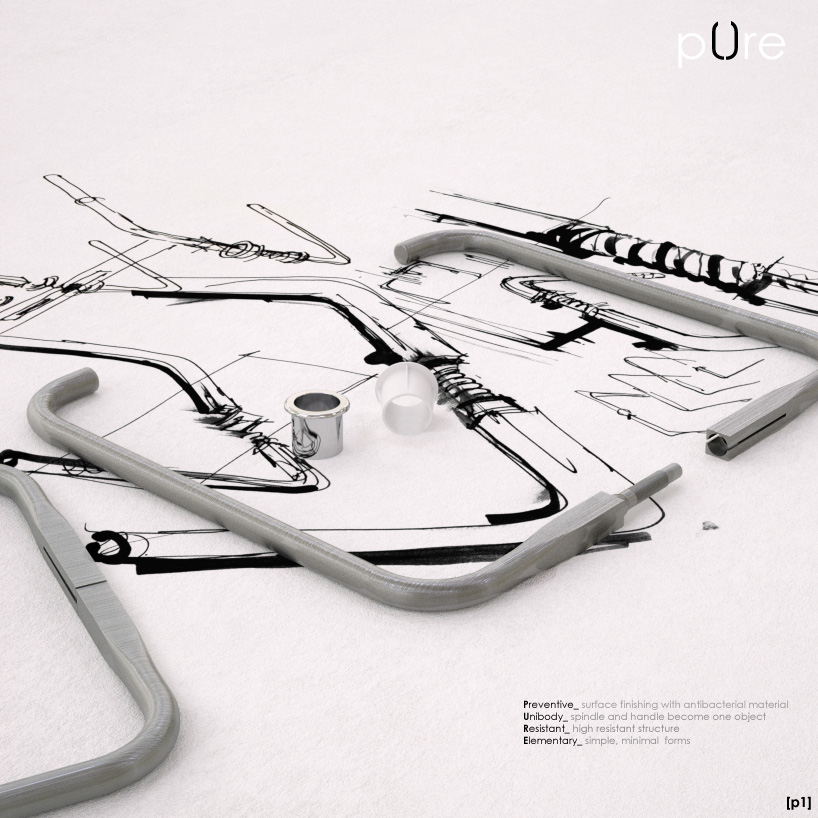
pure by ilias fragkakis from italy
designer's own words:
[pure] handle
spindle becomes handle
the idea of the project comes from the observation of the usual behavior of people in the act of opening and closing a door (indoor).
the design research was implemented and motivated by a preliminary investigation on a sample of 50 people that have been asked to do the same act (open and close a door) unaware of our observation protocol or the theme of the experiment. this eliminated the familiarization effects with the experiment and helped us avoid “forced” actions by the participants.
we found out that almost everybody opened and closed the door by manipulating the handle using only the tips of their fingers, wrapping partially or simply pushing the handle with the finger joints in slight extension. only a small number of participants (12%) was completely gripping the entire handle.
the explanation can be interpreted in the following way although more accurate biomechanical measurements are required to support these findings: interior doors are much lighter and easier to handle compared to the external ones. outdoor or large entrance doors are often armored and their weight forces the subject to use much more force, which in turn causes firmer holding and tighter grip of the handle with the whole hand.
this design simplification drives the acronym "pure" for this product: a slim handle fit to be used with the fingers - but also comfortable for use with the entire hand structure.
[p]reventive (surface finishing)
handles are considered a contact surface: objects frequently touched by people with high concentrations of a large variety of bacteria, microbes and viruses that can survive more than thirty days on the most common materials.
[p]ure utilizes copper alloys, as it has been demonstrated that copper and its alloys are antibacterial materials that, within one hour, eliminate almost 100% of microorganisms, making this handle a safe contact surface in human-building interactions. in 2008 the epa (us environmental protection agency) registered 282 different copper alloys that had nominal content of copper higher than 60% as highly antibacterial materials.
[u]nibody(composition)
p[u]re is made up of a single element for the spindle itself which with simple stretching and bending becomes the handle.
being designed for interior doors, there are two components that correspond to the two handles (one on each side):
the first one is internally threaded while externally it is shape as a standard spindle with all its functions;
the second forms a screw at its connecting end;
assembly directions:
1. insert the spindle (which in this case is the handle itself) into the corresponding space of the lock, all the way until the entire section of the lock is reached.
2. insert the other handle and screw anticlockwise. (the handle that gets screwed on must always be put on the side of the door opening where the opening movement is anticlockwise). at full stroke, the two handles will be aligned, joined in one body, and firmly stopped on the lock because the screw will gradually thicken, pushing and expanding the handle hole that has the function of spindle (principle of fisher).
- the handle is ready to use.
3. optionally, one can add a decorative a rose without fixation properties, and no screws, wit minimal dimensions; its only task is to hide the remaining of the hole. the rose can be omitted when the hole in the door is precise which is the case of metal or glass doors.
- to remove the handle, just apply pressure in the opposite direction of the door opening to the “screwing” handle. the other side will loosen too and the handle can be removed.
[r]esistant (structure)
pu[r]e’s structure has been studied with computer modeling-graphics methods and structural analysis for static loading. the optimal envelope of torsional strength at its relationship to the high stress areas was established with various types of steel. By using medium-strength steels, the handle can withstand forces of 55kg without any the structural deformation. structural strength can be increased by using high-performance steels.
[e]lementary (form)
pur[e] isn’t a re-design of classical forms, but it has a simple, minimal, essential shape that fits for doors and sliding doors. this adopts the contemporary forms of surrounding architecture, for both residential and public projects.
in other words…
[pure]: a single robust element with a simple, minimal, essential shape and antibacterial material, that fits for doors and sliding doors and that suits contemporary forms of surrounding architecture, for both residential and public projects.
sketches and 3d images of the handle
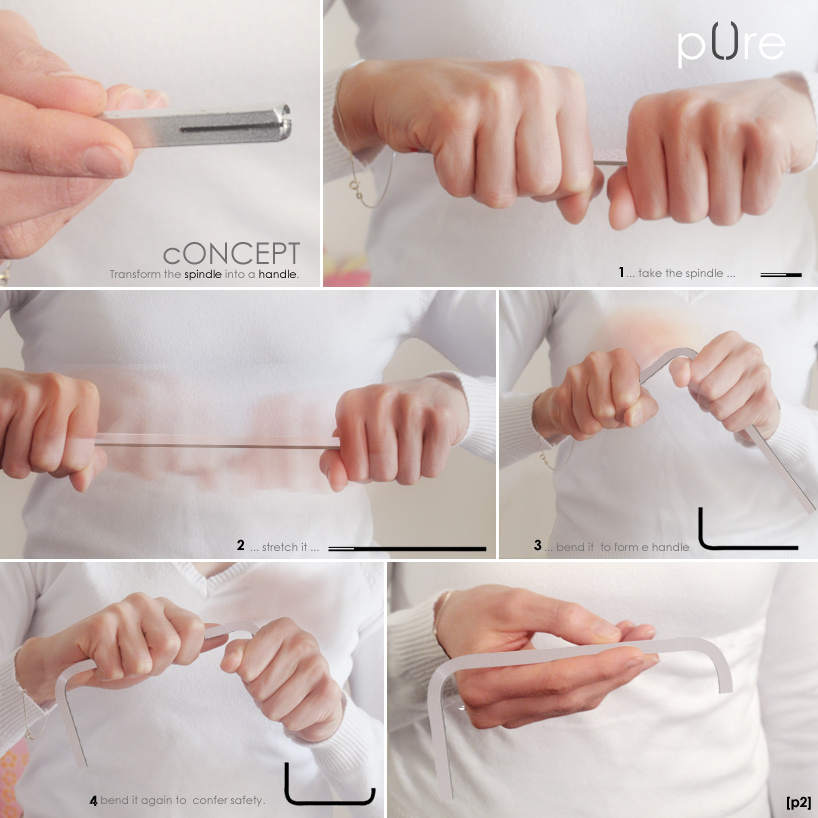 project concept and the magic of pure door enabler
project concept and the magic of pure door enabler
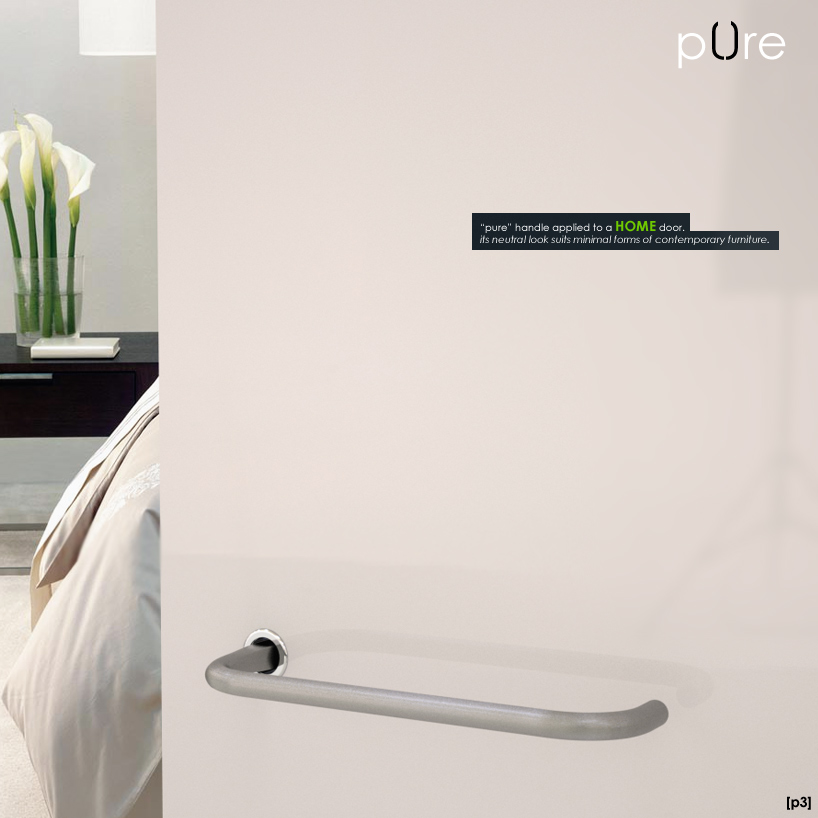 the pure handle: application to home door
the pure handle: application to home door
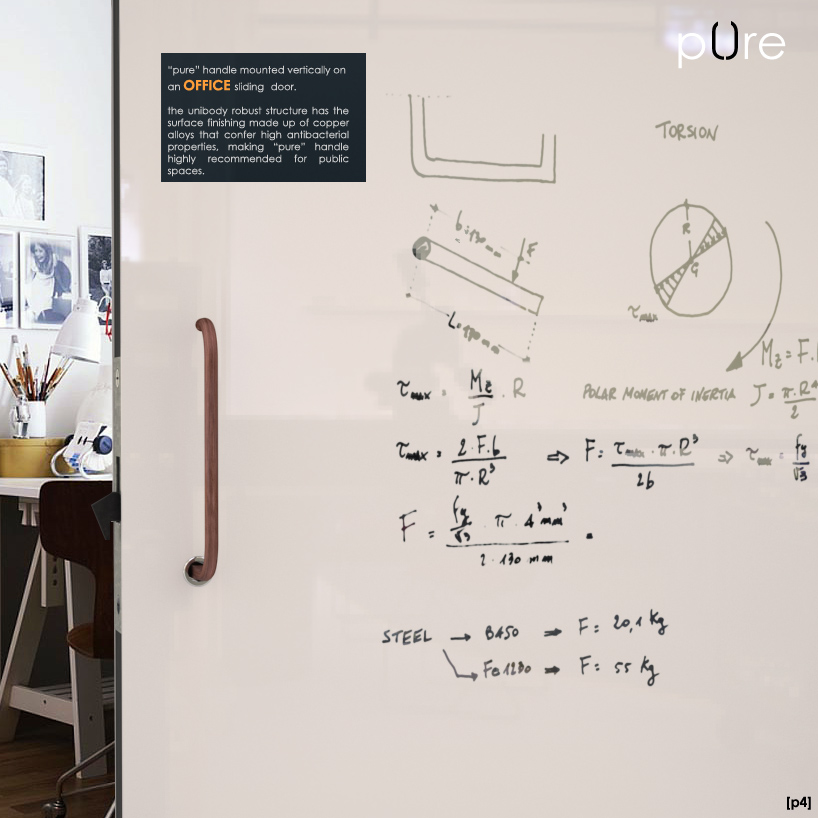 pure handle applied to a office sling door
pure handle applied to a office sling door
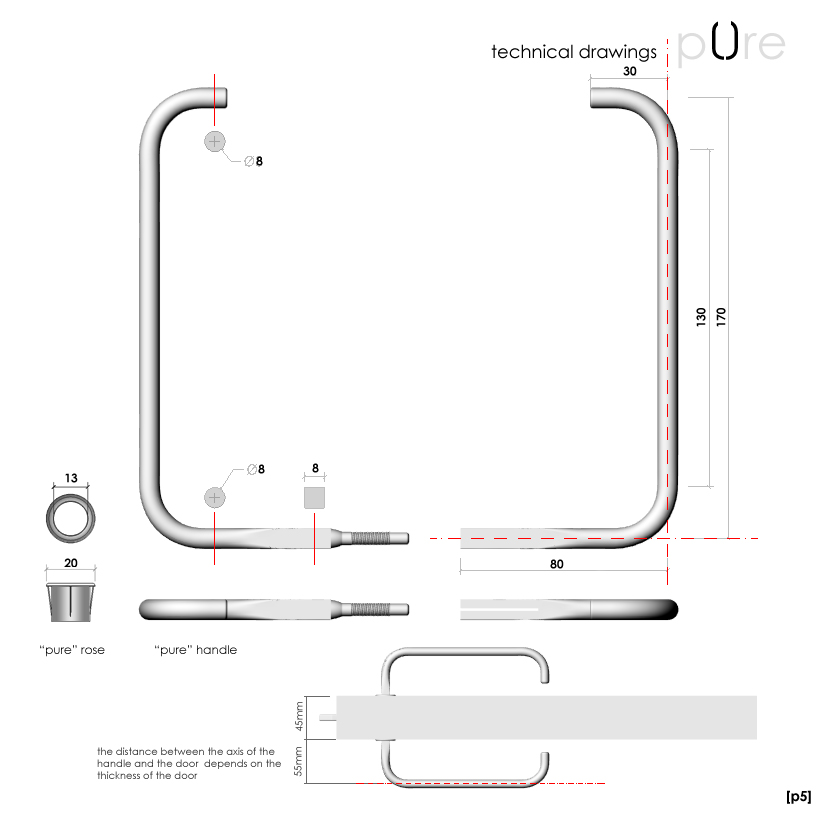 technical drawings
technical drawings
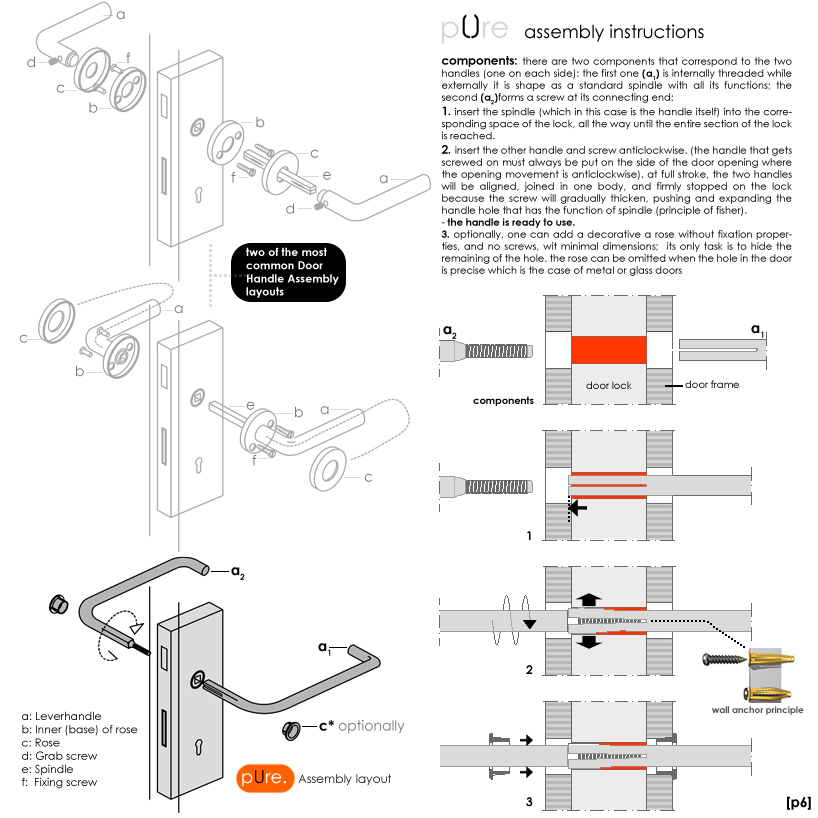 assembly instructions
assembly instructions